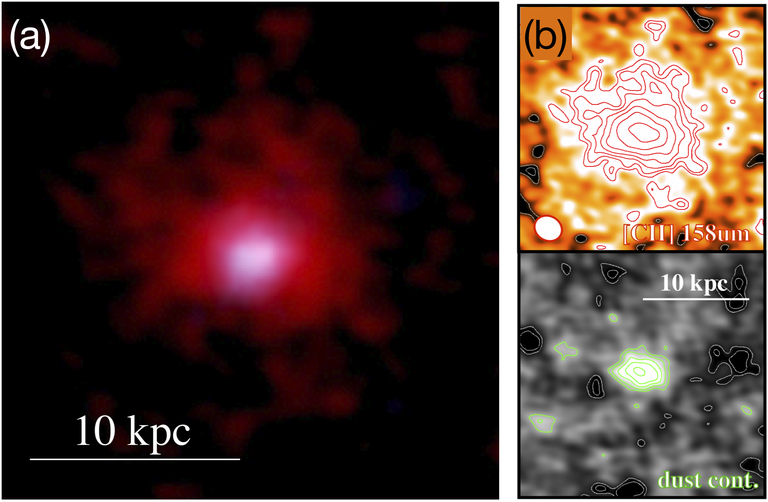Science Highlights - ALMA unprecedentedly deep data spots the earliest environmental pollution in the Universe
|
|
In a recent study, Seiji Fujimoto and his collaborators made full use of the ALMA Science Archive and performed visibility-based stacking of 18 star-forming galaxies at z = 5.153-7.142. The stacked data achieve the deepest imaging for the [CII] 158-micron line and the dust continuum so far obtained. Since heavy elements are produced by stars in galaxies and then ejected out to large radii by feedback processes, the extents of the carbon gas and dust are helpful probes to study the feedback mechanisms in early Universe galaxies. The authors discover that the extent of the [CII]-emitting gas (~ 10 kpc) is larger than the Hubble Space Telescope stellar continuum by a factor of ~5 (Figure 1a). Further, the [CII] emission is more extended than the dust continuum (Figure 1b). Current theoretical models are unable to explain such large carbon clouds around early galaxies, indicating that early galaxies eject an amount of carbon-rich gas far exceeding our expectations. |

 Figure 1. (a) HST stellar (blue) vs. ALMA [C II] (red) extent. (b) [C II] vs. dust continuum emission extent.
Figure 1. (a) HST stellar (blue) vs. ALMA [C II] (red) extent. (b) [C II] vs. dust continuum emission extent.